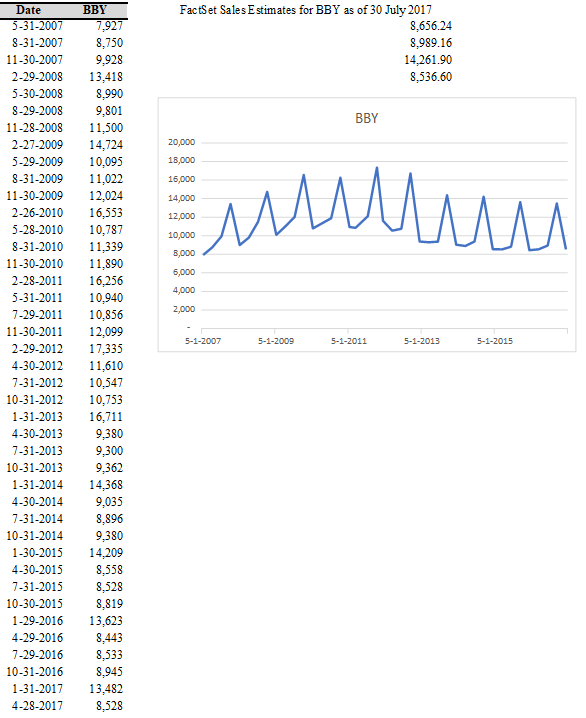A company benefits from economies of scale when it ________
A) does not use centralization of production and distribution
B) produces goods or services in multiple locations
C) adopts a highly differentiated marketing strategy
D) engages in the production of personalized products
E) manufactures and distributes products in higher quantities
Answer: E
Explanation: Purchasing, manufacturing, and distributing higher quantities will enable companies to produce goods and services at lower costs. This occurrence is referred to as economies of scale.
You might also like to view...
Using the Best Buy revenue data:

a) Fit the sales data using a linear regression model with a time trend and seasonal dummy variables.
b) Using the output from part a, create a chart that shows the model predictions versus actual sales.
c) Is the time trend statistically significant? How can you tell?
d) Are the seasonal dummy variables statistically significant? How can you tell?
e) Interpret the F statistic to judge whether the regression model as a whole is statistically significant.
f) Using the model that you have created, forecast quarterly revenues for the next year. How do these results compare to those created with the HWAM, HWMM, and Forecast.ETS models?
g) According to FactSet, analysts are forecasting the following revenues for the next year. How do your numbers compare?

Which of the following costs is considered overhead?
A) Indirect labor costs only B) Direct materials costs only C) Both indirect materials and indirect labor costs D) Direct materials and direct labor costs
______ is a process of allocating revenue and costs to customer segments or individual customers in order to determine their profitability.
A. Company profitability analysis B. Customer profitability analysis C. Collective profitability analysis D. Convenient profitability analysis
Wyatt, a senior member in an organization, received a pay raise when the company implemented some changes in response to a new technology that it had adopted. This is an example of a ________ compensation.
A. culture-contingent B. person-contingent C. market-contingent D. performance-contingent E. job-contingent